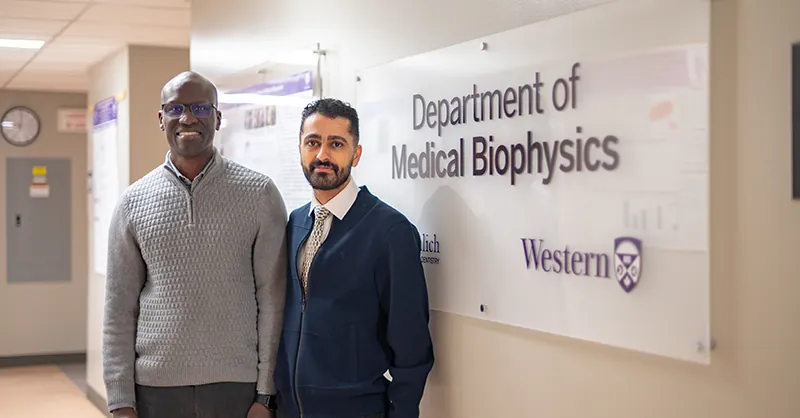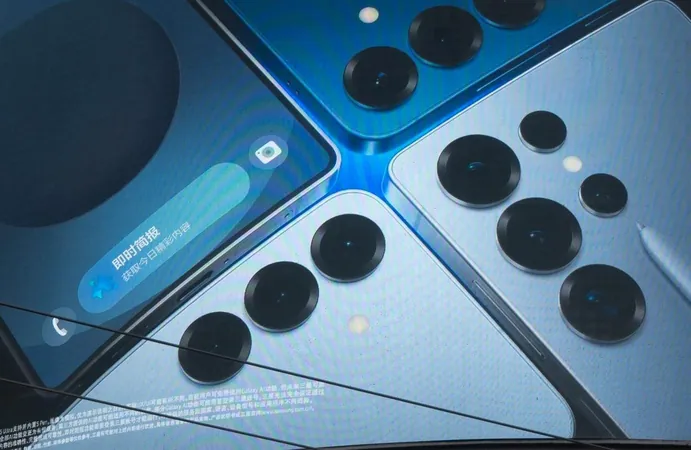
Revolutionary Technology Offers New Hope in the Fight Against Sepsis!
2025-01-14
Author: Olivia
In the ongoing battle against one of the deadliest medical conditions, sepsis, groundbreaking advancements are on the horizon.
Researchers Rasa Eskandari, an MD-PhD student, and Associate Professor Mamadou Diop at the Schulich School of Medicine & Dentistry have developed an innovative technology that could revolutionize early detection and treatment of sepsis. This condition is notorious for its ability to deceive, often mimicking less severe illnesses and delaying crucial timely interventions, leading to dire consequences including multiple organ failure and death.
What Is Sepsis? The Silent Killer We Need to Fear!
Sepsis occurs when the body’s response to infection causes widespread inflammation, potentially resulting in tissue damage, organ failure, and ultimately, death. Symptoms like fever and confusion can easily be mistaken for other illnesses, complicating early detection efforts. Alarmingly, the chance of mortality from sepsis increases by 8% with each hour that treatment is delayed. Therefore, there is an urgent need for accessible technologies capable of identifying sepsis at its earliest stages, especially in under-resourced regions.
The Technology That Could Save Lives
Eskandari emphasizes that the goal of their research is to create non-invasive bedside optical tools capable of continuously monitoring tissue health and blood flow. These devices use light to assess microvascular function by measuring the flow of blood in small vessels throughout the body. This innovative approach has the potential to quickly reveal early signs of deterioration, offering a crucial window for intervention.
Recent findings suggest a link between microvascular dysfunction in skeletal muscle and the onset of sepsis. During critical periods of low blood flow, the body often prioritizes vital organs like the brain, potentially sacrificing peripheral tissues. By focusing on skeletal muscle microcirculation, the researchers believe they can detect sepsis before irreversible damage occurs.
A Glimmer of Hope for Vulnerable Populations
The implications of this research are profound, particularly for low-resource areas where access to medical care is limited. The non-invasive nature and relatively low cost of this technology could revolutionize sepsis monitoring not only in hospitals but also in remote and underserved regions. Eskandari notes that their innovations aim to empower health care providers to intervene sooner, which could drastically reduce sepsis-related complications and fatalities.
Timeline for Adoption in Clinical Settings
While commercial optical spectrometers are already in use for other medical monitoring tasks, their adaptation for sepsis detection represents a significant challenge. Ongoing clinical studies are set to take place over the next three years, focusing on pediatric patients in London, Ontario, which will be pivotal for evaluating the technology's effectiveness in humans.
The Future of Sepsis Research: Uncovering New Frontiers
Looking ahead, Eskandari and Diop are eager to explore additional facets of sepsis. Future studies aim to investigate how their technology can detect brain injuries tied to oxygen deprivation and microvascular dysfunction, as well as understand the varying responses to sepsis across different patient subtypes.
As the fight against sepsis continues, the collaboration and innovations emerging from the research community serve as a beacon of hope. With continued research and development, this groundbreaking technology stands to make a significant impact on global health, improving the lives of countless individuals at risk of this formidable condition.
Stay tuned for more updates on this exciting research and how it might soon change sepsis diagnosis and treatment forever!









 Brasil (PT)
Brasil (PT)
 Canada (EN)
Canada (EN)
 Chile (ES)
Chile (ES)
 Česko (CS)
Česko (CS)
 대한민국 (KO)
대한민국 (KO)
 España (ES)
España (ES)
 France (FR)
France (FR)
 Hong Kong (EN)
Hong Kong (EN)
 Italia (IT)
Italia (IT)
 日本 (JA)
日本 (JA)
 Magyarország (HU)
Magyarország (HU)
 Norge (NO)
Norge (NO)
 Polska (PL)
Polska (PL)
 Schweiz (DE)
Schweiz (DE)
 Singapore (EN)
Singapore (EN)
 Sverige (SV)
Sverige (SV)
 Suomi (FI)
Suomi (FI)
 Türkiye (TR)
Türkiye (TR)
 الإمارات العربية المتحدة (AR)
الإمارات العربية المتحدة (AR)